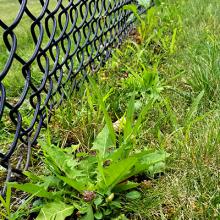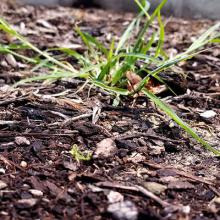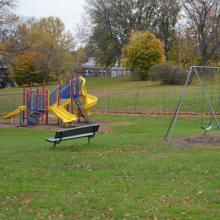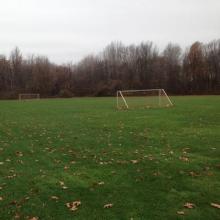
Thermal weeding includes all weed control techniques that use heat to kill weeds. On this page, we discuss three thermal weeding mediums - flame, steam, and hot foam. View more information about thermal weeding equipment offerings.
Flame
Flame weeding, or flaming, is the use of fire to kill or damage weeds. Flame weeders typically use propane for fuel. The goal of flame weeding is not to set weeds on fire, but to damage a weed's cellular function and structure. Compared to other thermal weeding equipment, flame weeders are the most easily acquired by the public.
Flame weeding is more effective against broadleaf weeds than grasses and grass-like weeds. Though flaming will not kill perennial weeds in one pass, repeated flaming can be used to suppress growth and exhaust a perennial weed's carbohydrate reserves.
Several models of flame weeding equipment are available from multiple companies, but all are basically giant blowtorches. As such, great care should be taken during this equipment’s operation.
Advantages
- Controls a wide range of weeds.
- Controls herbicide resistant weeds.
- No residual activity or risk of spray drift.
Disadvantages
- Non-selective. Flaming does not distinguish between a weed and desired plant.
- Fire hazard. Do not use in areas that pose a fire risk.
- High energy requirement.
Keys to Flame Weeding
- Timing is key! Flame weeding is most effective when weeds are less than 3 inches tall. Taller weeds may require repeated passes.
- Hold the burner at an angle of 22 to 45 degrees to the ground.
- Walk at 1-2 mph. Slower walking speeds are needed when flaming more tolerant weeds, such as common purslane.
- If you are not sure if you have flamed enough, do a fingerprint test. Once cool, press leaf of a flamed weed between your thumb and pointer finger. If a fingerprint is left behind when you remove your hand, the flaming was successful!
Before you start:
- Check with your local fire department to see if flame weeding is legal in your area.
- Do not flame weed poisonous plants, such as poison ivy, poison oak, or poison sumac. Smoke produced by these plants can cause rashes on or in the skin, eyes, throat, and lungs.
- Do not put flame near desirable plants.
- Take care when flame weeding dry vegetation, dry wood chips, other flammable substances, or near buildings.
- Have a fire extinguisher and/or source of water readily accessible.
Steam
Steam weeding is another effective method of managing weeds. Though both flame and steam weeding use heat to damage and kill weeds, the mechanisms by which they do so are different. Steam damages weeds by melting the waxy cuticle on a plant’s surface which causes dehydration and eventually plant death.
Most annuals and young perennials can be killed by a single application of steam; however, older perennials often require multiple applications. While steam does not affect the underground portions of a weed, repeated applications will kill the aboveground portions thus limiting photosynthesis and eventually exhausting the plant’s carbohydrate reserves.
Weedtechnics produces most of steam weeding equipment available. The equipment is appropriate for commercial or larger scale land care endeavors.
Advantages
- Controls a wide range of weeds.
- Controls herbicide resistant weeds.
- High application precision.
- No residual activity or risk of spray drift.
- Lack of fire risk.
Disadvantages
- Non-selective.
- Sensitive to weather conditions.
- High energy requirement.
- High initial investment.
Hot Foam
Using hot foam is an emerging weed control technique. This nontoxic method can be used to control various weed species in many different environments such as hard surfaces, public areas, and cropping areas. In addition, hot foam can be used to clean surfaces of moss, algae, grime, graffiti, and gum.
Like steam weeding, hot foam kills weeds by melting the waxy cuticle which causes the plant to dehydrate. When applied, the hot foam surrounds the weed in superheated air and prevents rapid dissipation of the heat. As a result, high temperatures are maintained around the weeds for an extended period. Due to this, the efficacy of hot foam is less susceptible weather changes.
Weedingtech is the leader in hot foam weeding equipment. Currently, their equipment is applicable to commercial and municipal use.
Advantages
- Controls a wide range of weeds.
- Controls herbicide resistant weeds.
- High application precision.
- No residual activity or risk of spray drift.
- Lack of fire risk.
- Less susceptible to weather changes.
- Fast application speed.
Disadvantages
- Non-selective.
- High energy requirement.
- High initial investment.







